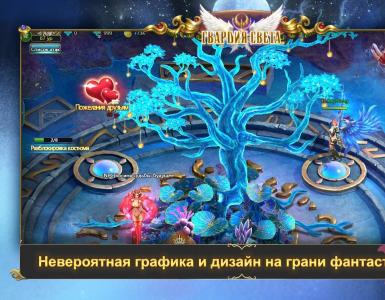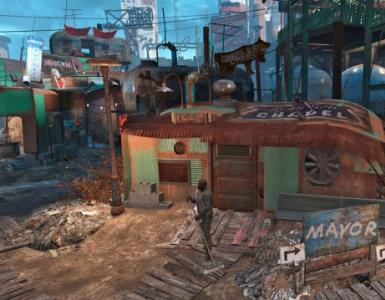Monuments dedicated to the family. Technique “Sculpture of the family. Sculptural composition "Happy family", Samara
In honor of the All-Russian Day of Family, Love and Fidelity, we have prepared for you a selection of the best monuments dedicated to family and motherhood throughout Russia.A touching and at the same time dynamic monument to the family was erected in the city of Saransk in 2008.
sculptural composition in natural growth depicts a large family: the head of the family with youngest child on the shoulders, a mother "in position" and two more children at the edges, holding on to their parents.

Monument "Family at the camera", Belgorod.
The sculpture was opened on December 12, 2008. This work is a “motivator”, it is based on the principle of associative perception of what a happy full-fledged family should be: beautiful people rejoicing in life; the principle of "2 + 3", emphasizing having many children as a natural norm of life.

Composition "Family", Moscow.
The sculptural composition includes a mother, father and their three children.

Monument to mother, Tyumen.
The monument was opened on June 1, 2010. The bronze monument depicts a late pregnant woman with children next to her. Initially, it was planned to install a figure of the pope nearby, but the author of the monument refused this idea, nevertheless, a wedding ring appeared on the woman’s hand.

Monument "Family" in Astrakhan.
sculptural composition on observation deck front swan lake was opened in autumn 2013. The sculpture is made of bronze. The monument depicts a father sitting next to a pregnant mother and their two children.

Monument to motherhood in Koita, Komi.

Monument "Family Ties", Tomsk.
The monument was erected on June 11, 2008. The sculptural composition depicts embracing figures of a woman and a man holding a baby in their arms. Parents in this family are an indivisible whole. A hole in the form of a heart has been cut in the sculptural composition.

The family is a symbol of unshakable values that are and will be the foundation of society. This is your island of love and support in a strange world. People who will always accept and understand...
Sculptural composition "Family", Desnogorsk
The bronze composition was installed on the square near the church of Stefan the Great Perm. Her "heroes" are mom, dad and children.
The idea of creating a sculpture belongs to the Council of Enterprise Managers, because. the family is the foundation of every society, the foundation upon which the future is built. This is what makes our people strong and Russia a strong state. This is what became the driving force behind the implementation of the project.
The author of the sculpture is Ivan Melnikov, Honored Artist of Russia, full member of the Petrovsky Academy of Sciences and Arts. The artistic idea of the sculptor was embodied in bronze by the Smolensk masters of the artistic monumental casting workshop of the Olaks company (Katyn).

Sculptural composition "Family", Orel
The sculptural composition "Family" is located in Orel on the territory of the "GRINN" mega-complex.
The composition represents a young couple leading their children by the hands: the girl is going to enjoy a portion of ice cream, the boy pulls his mother aside, apparently, he spotted something interesting. A man and a woman look into each other's eyes - they are in love and happy.
The author of the sculpture is Yuri Kireev.
“The family is the foundation of the city. It all starts with her and for her, in the end, we work, ”said Mikhail Bernikov, head of the Orel administration, at the opening of the sculptural composition.


Sculptural composition "Family", Astrakhan
The sculptural composition on the observation deck in front of Swan Lake in the city of Astrakhan was opened in the fall of 2013. The monument is a collective image in which many families can recognize themselves and their loved ones.



Sculptural composition "Hello", Sterlitamak
The composition is located on the alley along October Avenue. Passers-by have a view of the family on a walk - dad, mom, children and their little pet personify the usual Russian family, the preservation of which is so important for every child.
The monument to the family was donated to the city by Sterlitamakskiye railways". The author of the idea is the Sterlitamak sculptor Alexander Pimenov, the implementation and modeling - the sculptor Nikita Mazaev (Moscow). Execution and casting in bronze was made by the sculptural and production enterprise "Lit Art" (Zhukovsky).

Monument to the family, Kazan
The monument to the family is located in the courtyard on Adoratsky Street. Next to the monument is a sign that says: “Family is happiness. And you know that they are waiting for you and you have somewhere to rush.
The sculptural composition represents a happy married couple with two children and their dog. The woman gently holds the baby, gently touching him with her face, the man and the eldest son look at them with delight and love, a beautiful and well-groomed dog lies at her feet.


Sculptural composition "Happy family", Samara
Monument " Happy family" is located near the village of Krasnaya Glinka, on the Krasnoglinskoye Highway. It is installed right next to the road and is located on some elevation, representing a sculptural composition of the figures of a father, mother and daughter sitting in the arms of a man. The monument can be seen from afar, as it was conceived during the development of the project.
This sculptural composition is considered an important place, because newlyweds come here to capture one of the happiest moments of their lives. It is considered the starting point for the present family life. Those who have been here say that the monument seems to add vitality and energy, helps to believe in true love.
At the sight of this monument, lines from the immortal novel "Anna Karenina" involuntarily pop up in my memory: "All happy families are happy in the same way, each unhappy family is unhappy in its own way."
Depicted by an unknown sculptor, beautiful and strong people are the embodiment of true family happiness. In 2010, the sculptural composition was restored, and the area around it was landscaped.


In the city center, near the new puppet theater, a sculptural composition "Family" appeared. It is made in the tradition of the Dymkovo toy, a famous folk craft. A woman with a baby, a man with an accordion, a child, and animals - a cat and a dog. Whole "Family". Nearby, you can sit down on a bench, feel like a member of the family and take a picture.
This holiday was presented to the city by Megafon Company. On the day of the presentation, more than 2,000 residents and guests of the city of Kirov attended the opening. During the concert, on the occasion of the opening, artists of many genres performed. From Russian folk song groups to youth teams performing folk rock and break dance.
The sculptural group "Family" will become a real treasure of the Kirov region, a symbol of the fulfillment of desires. This magical feature was experienced by the newlyweds Konstantin and Ekaterina Bulychev, who on this day wished well-being and replenishment in the family at the sculpture.

 It is also symbolic that nearby, a few meters away, there is a “zero verst”. This is a symbol of the beginning of the countdown of the entire Vyatka land.
It is also symbolic that nearby, a few meters away, there is a “zero verst”. This is a symbol of the beginning of the countdown of the entire Vyatka land.
V Lately Many beautiful and symbolic monuments and memorable places began to appear in Kirov. It's nice that one of them combined the traditions and pride of the Vyatka land with such an eternal value as the Family.
Rationale
The essence of this technique is that the location of people and objects should physically symbolize intra-family relationships at a given time, determining how each individual's place in the family system is seen. Each family member creates his own living portrait of the family, arranging the next of kin according to his own view of the distance between them, the activities that they carry out in relation to each other, and the feelings that they experience. Thus, the experience of each is embodied in a living picture and projected on the applied. Papp, Silverstein, and Carter (Parr, Silverstein, Carter, 1975) and B. Dahl, F. Dahl, and Watanabe (Duhl, Duhl, Watanabe, 1975) are among those strategic therapists who have used this technique extensively.
One of the many advantages of sculpture is its ability to overcome the over-verbalization, over-intellectualization, and various defenses, projections, and accusations that often exist in the family system. Family members are not allowed to interact with each other with their usual verbal hints, but are forced to communicate on a qualitatively different, more spontaneous level. When triangles, alliances, and conflicts are visually and symbolically depicted, there are various opportunities for interaction based on feelings in their subtlest shades. In this respect, sculpture is a pretty good diagnostic tool.
Another advantage of sculpture is the effect it has on family members, forcing them to think of themselves as a kind of unity in diversity, where the whole is important, and each of its elements is an intrinsically valuable human personality. It is impossible to isolate any subsystem of intra-family interaction without taking into account the consequences that they will have for the whole family. Sculpture not only unites the family, it also emphasizes the individuality of each. In addition, it requires a family member to summarize their personal experience, comprehend it, and then interpret it.
Sculpture also gives the therapist the opportunity to directly intervene in the family system. At the same time, the structural therapist helps family members redistribute their positions in the family, thus contributing to the creation of more acceptable boundaries of intra-family subsystems. In this context, it can be argued that the sculpture is used to make positive changes in the family, for its full functioning.
Procedure
The "Family Sculpture" technique is used at any stage of diagnosis and therapy. At least three or four people, a certain amount of easily moving furniture and items that are used as replacements for family members absent from the session are enough to conduct it. The sculpture can represent both the present and the past of the family and include any number of members of the extended family required for therapeutic purposes.
Introducing clients to this technique, the therapist explains that it helps, first of all, to feel what it means to be a member of this family. Sometimes it is easier to show than to say. Each family member in turn shows his vision of intra-family relationships, depicting them in living sculpture so that their postures and positions in space reflect actions and feelings towards each other.
Papp suggests that the sculptor treat the family members as if they were made of clay. The sculptor puts everyone in a position that could characterize him non-verbally. At the same time, the psychotherapist takes the place of the sculptor himself in the family sculpture, as the sculptor himself sees him. "Sculpting" continues until the sculptor is satisfied with his creation. It is important that other members of the family allow the sculptor to freely handle themselves as "material", knowing that they will then switch places with him.
When each family member has created their own "real" family sculpture, reflecting the emotional situation in the family at the moment, they can also be asked to create an "ideal family" sculpture.
The psychotherapist has the opportunity to intervene in this process, offering his options and directly commenting on what is happening. Subsequently, one can turn to the sculpture of the "ideal" family in order to trace the dynamics of the psychotherapeutic process. At the same time, the discrepancies between the ideas about the structure of the family of its various members are very significant and are easier to identify with the help of family sculpture than on the basis of traditional verbal techniques.
There are many options for using the Family Sculpture technique. Some psychotherapists who use this technique ask the sculptor to come up with a word or phrase for each family member that would best describe that person's behavior. Family members should then say them in sequence. In this case, not only visual, but also auditory effect is achieved.
Discussed not only the entire sculpture as a whole, but also its individual parts. The therapist may also ask the following questions.
1. (to each family member) How do you feel at this place
among your relatives?
2. (to the whole family) Did this sculpture surprise you?
3. (to each family member) Did you know before that the sculptor
perceives you exactly as he portrayed it?
4. (to the whole family) Do you agree that your family functions
does it look exactly like it is depicted in the sculpture?
5. (to the sculptor or family) What changes in the life of the family do you
would like to see?
6. (to the sculptor, before all other questions) Come up with a name
your work.
You can also organize a discussion of the work done by the family, the sculptor and the psychotherapist right at the session.
Sculpture is also used in individual psychotherapeutic work. In this case, the roles of family members are played by furniture or other large items in the office. Although this approach sometimes lacks the live presence of family members, it also helps to bring about positive changes in the family system.
At the same time, the sculpture should not be interpreted too harshly, since it does not reflect an objective intra-family situation, but only the subjective opinion of one of the family members, the subjective reality of his inner world.
Usage
This technique is used in work with almost any small social group and any individual - with a married couple, subsystems "parents - children", "brothers - sisters", with a complete family, with a team of psychotherapists or any other work team, and even with an entire industrial corporation , although the conditions for conducting may differ significantly from each other. Sculpture can be used as a means of evaluating the system and as a means of intervention in it, and even as a special mechanism for communicating with clients. It is a powerful counterbalance to all sorts of resistances and impasses that arise in the course of the psychotherapeutic process.
Teenagers usually become excellent sculptors due to their sensitivity to what is really going on in the family and their natural desire to manipulate their next of kin. Introverted children are also good sculptors, although their creations are often stereotyped and idealized. Moreover, the so-called "prosperous children" can express through sculpture their secret loneliness, fear or hostility, those feelings that, as it was previously believed, "disadvantaged children" should mainly experience. For various reasons, it is difficult to encourage young children and parents to "sculpt": the former because of a lack of understanding of family problems, and the latter because of the fear of losing their dignity. However, when the initial awkwardness passes, they can show themselves as talented sculptors, and then a very interesting competition arises between family members, in which the point of view of each is expressed freely and openly.
In the course of the implementation of the methodology, family role patterns begin to appear - triangles, alliances, specific emotional relationships, as well as such problems as the struggle for power, proximity, distance, boundaries. Family Sculpture Technique - good remedy observation of all this, especially in families accustomed to the use of sophisticated verbal manipulation, or in those who resist traditional psychotherapeutic conversation.














